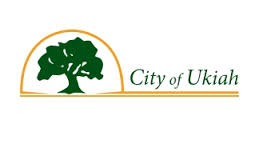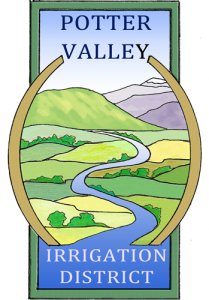Mendocino County Inland Water & Power Commission
About
Protecting Mendocino County's water supply now and in the future
In 1996, the Mendocino County Inland Water and Power Commission (IWPC) was formed as a joint powers authority to serve as stewards of the Russian and Eel River watersheds, safeguarding the water that plays such a vital role to the region’s economic development, environmental quality, and general well-being of those who use this water.
IWPC is deeply involved in protecting the future of the Potter Valley Project because the Project provides water to hundreds of thousands of people from Mendocino County through Marin County–supporting agriculture, wildlife, and many local communities.
IWPC members include:
- County of Mendocino
- City of Ukiah
- Redwood Valley County Water District
- Potter Valley Irrigation District
- Mendocino County Russian River Flood Control and Water Conservation Improvement District
Current Pressing Issues
IWPC
Member Agencies
Redwood Valley County Water District

Redwood Valley County Water District Representation
Commissioner: Tom Schoeneman
Alternative Commissioner: Bree Klotter
Contact
Redwood Valley County Water District (Redwood) was incorporated in 1967 and began seeking funding to construct a water district to serve the unincorporated community of Redwood Valley. Redwood began providing service in 1976 to both residential and agricultural entities through separate, parallel distribution systems.
Currently Redwood provides drinking water to approximately 5,200 people through 1,150 service connections. The agency’s residential customers are primarily single-family homes, including three mobile home parks and two Indian reservations. Redwood serves agricultural water to 2,200 acres, primarily planted to premium wine grapes. Redwood diverts water from its own water right and water purchased from the Mendocino County Russian River Flood Control and Water Conservation Improvement District (RRFC) from its pump station at Lake Mendocino. Redwood has the only water diversion facility directly from Lake Mendocino. Typical treated water deliveries to domestic customers range from 800 to 1,000 acre feet per year. Typical untreated water deliveries to agricultural customers range from 800 to 1,400 acre feet per year.
WebsiteMendocino County Russian River Flood Control and Water Conservation Improvement District

Mendocino County Russian River Flood Control and Water Conservation Improvement District Representation
Commissioner: John Reardan
Alternative Commissioner: Dave Koball
Contact
DistrictManager@rrfc.net
The mission of the Mendocino County Russian River Flood Control and Water Conservation Improvement District is to steward water resources for the benefit of the people and environment.
We accomplish this mission through communication with our customers at regular board meetings, collaboration between agencies, and compliance with Special District regulations. Our board meetings are held the first Monday of each month at 5:30 p.m. in our district office, located at 304 N. State Street in Ukiah.
The Mendocino County Russian River Flood Control and Water Conservation Improvement District serves agricultural customers through direct diversion and approximately 4,500 connections in nine water districts throughout the Ukiah and Redwood Valleys.
WebsiteMendocino County Water District
Mendocino County Representation
Commissioner: 1st District Supervisor Glenn McGourty
Alternative Commissioner: 2nd District Supervisor Maureen Mulheren
Contact Information
Mendocino County is a general law county established in 1850 by the California Legislature and is a political subdivision, or unit, of the State. The County is represented by five non-partisan elected members comprising the Board of Supervisors. The Board of Supervisors is the governing body and sets policy and priorities for the County. The County is responsible for providing municipal programs and services in unincorporated areas of the County, and its powers are limited to those granted by the State.
The Mendocino County Water Agency (Water Agency) is a special district that encompasses all of Mendocino County and is governed by the Board of Supervisors sitting as the Board of Directors. The Water Agency is administered by the Mendocino County Executive Office.
The Agency’s roles include:
- The National Pollution Discharge Elimination System (NPDES) – municipal separate storm sewer system (MS4) Phase II permit, for the control of storm water runoff
- The California State Groundwater Elevation Monitoring program (CASGEM) – statewide effort to track seasonal and long-term trends in groundwater elevations
- Representing the County in implementing the Sustainable Groundwater Management Act by serving as a member of the Ukiah Valley Basin Groundwater Sustainability Agency and collaboratively developing a Groundwater Sustainability Plan for the Ukiah Basin
- Providing information to the public regarding water resources in Mendocino County, and actively communicating with federal, state, and local water agencies regarding water-related legislation and policy
- Providing technical assistance to other County departments
City of Ukiah
City of Ukiah Representation
Commissioner: Mari Rodin
Alternative Commissioner: Juan Orozco
Contact Information
The City of Ukiah is located in Mendocino County in the northern coastal region of California. The City is situated in the Yokayo (Ukiah) Valley—approximately 60 miles north of Santa Rosa, 20 miles south of Willits, and 5 miles southwest of Lake Mendocino. The valley is bordered on the west by the Mendocino Range and on the east by the Mayacamas Mountains. Interstate Highway 101 runs north and south through the City along its eastern boundary. The Russian River flows from north to south through the Ukiah area. The City is the Mendocino County seat.
Originally part of a Mexican land grant, the City began its history as a valley settlement in 1856. Lumber production became a major industry by the end of the 1940s because of the City’s moderate climate and productive soil. Currently, agriculture is the largest industry in Ukiah and the rest of Mendocino County. Ukiah is home to wineries, grape vineyards, pear orchards, wood production plants, and non-agricultural manufacturers.
The incorporated area of the City is governed by a five-person city council in a council-mayor-manager form of government. The mayor is selected by the Ukiah City Council each year from the five-member council. General administration and day-to-day operations are directed by the city manager who is appointed by the council. The City is a general law municipality, governed by the State of California in conjunction with its local ordinances.
The City water system is responsible for delivering treated water to residential, commercial, and agricultural customers. As of 2015, the system serves about 4781 connections within the City boundaries. Although the City serves most of the residents within the City limits, less than 1 percent of City residents are served by other water systems. The City’s current water service area is predominantly within the City boundaries. Water demand within the City’s service area correlates with land use, which is primarily residential, but also includes commercial/institutional and industrial land use.
The City’s water distribution system consists of five active wells (four groundwater wells and one surface water well), one surface water (Ranney) collector, the water treatment plant, eight distribution reservoirs, and piping to and within the distribution system. The City is also in the process of constructing a recycled water system that will provide approximately 1500 acre feet a year to local agriculture, parks, and industrial users.
WebsitePotter Valley Irrigation District
Potter Valley Irrigation District Representation
Commissioner: Janet Pauli
Alternative Commissioner: Guinness McFadden
Contact
pauli@mendoiwpc.com
mcfaddenfarm@pacific.net
Potter Valley is successfully farmed today due to the foresight of a few who recognized the value of a new water supply and organized the Potter Valley Irrigation District (District) in 1924. Prior to the building of Scott Dam in 1922 and the forming Lake Pillsbury, Potter Valley was dry farmed. On June 12, 1928, the people of Potter Valley voted to bond the District for $100,000 for 20 years. In August of 1928, the District took bids for the construction of the canals, laterals, flumes and gates. The main canals were dug by rotary ditchers and the canals were dug by teams of horses with V ditchers. Construction was slowed in 1928 because of strong winter storms, but was ultimately completed May 15, 1929. The first deliveries of water by the District began May 29, 1929. The bond was retired July 1, 1952 and the District has remained free of debt since that day.
Originally, the District had a contract for delivery of water from Snow Mountain Water and Power. This contract, signed on September 31, 1926, was confirmed by the California Railroad Commission on July 30, 1930. Snow Mountain Water and Power sold to Pacific Gas and Electric Company (PG&E) and the District contract was transferred to PG&E on February 5, 1936, amended May 1, 1939. It is still in effect today. The contract requires PG&E to divert 50 cubic feet per second (cfs) for use by the District, up to a total of 19,000 acre feet per year. The District can use 16,600 acre feet of the 19,000 acre foot contracted amount during the summer. The rest of the year, PVID can request water at a rate not to exceed 50 cfs until the balance of the 19,000 acre feet is used. The District purchases water from PG&E at a rate that can be renegotiated every five years.
The District has access to several perfected water rights granted by the California State Water Resources Control Board. Three of these licenses are held by PG&E and the District is named as the place of use, with irrigation named as the specific purpose of the beneficial use in two of the licenses. These three water rights licenses are for water stored in Lake Pillsbury or available in the Eel River, and together they form the legal basis of the water delivered to the District by PG&E. A fourth perfected water right is held by the District for water released below the Potter Valley Powerhouse into the East Branch of the Russian River. These perfected water rights grant the District the right to use a total of 22,670 acre feet of water per year at a rate not to exceed 100 cfs at any given time. The District has the right to irrigate 4,905 acres in our net place of use and 23,040 in our gross place of use. The District placed a moratorium on annexation of land into the District boundaries following the last license amendment proceeding reduction in diversions from the Eel River.
Today, the District provides irrigation water for 390 farmers irrigating 6900 acres of land. The main crops irrigated in Potter Valley include pastures for grazing cattle and hay production, pear orchards, wine grape vineyards, row crops, nurseries and a few sheep, horse and goat farms. The value of these crops is between $35 million and $40 million per year. On average, taking the past 20 years of water sales, we have sold approximately 16,000 acre feet per annum. The amount of water delivered varies yearly depending upon the weather.
The District has been an active participant in the relicensing of the Federal Energy Regulatory Commission hydropower license held by PG&E. We are also a member of the Potter Valley Drought Working Group (PVDWG). By working with all the major stakeholders, the PVDWG successfully managed water releases from Lake Pillsbury for both the Eel River fishery and for beneficial users on the Russian River during our recent drought of record.
In 1922, after Scott Dam was built and water was first diverted through the Potter Valley Project in the summertime, life for the farmers in Potter Valley changed dramatically. Now, both the amount of water diverted and the timing of the diversions are critically important for the District to be able to provide water to our farmers and ranchers. The community of Potter Valley is completely dependent upon the continued diversion of water from the Eel River for our economic viability and quality of life.
Website



